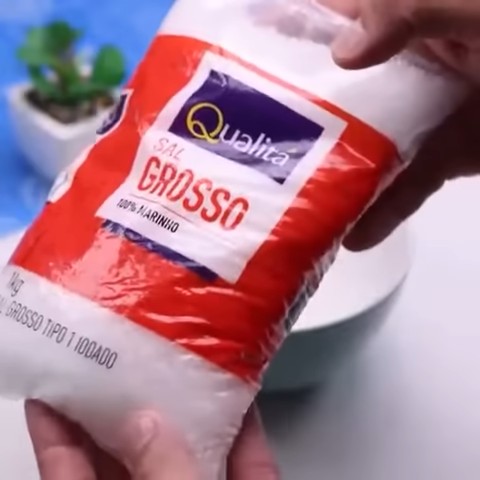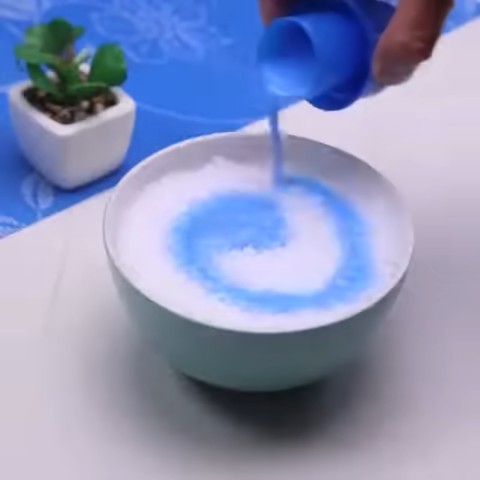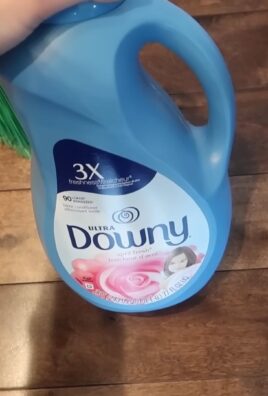Salt household hacks are about to revolutionize your cleaning routine! Forget those expensive, chemical-laden cleaners – the secret to a sparkling home might already be sitting in your pantry. I’m so excited to share these simple, effective, and surprisingly versatile uses for salt that will save you time, money, and a whole lot of elbow grease.
Salt, a seemingly humble mineral, has a rich history. For centuries, it was so valuable it was used as currency! Beyond its culinary uses, ancient civilizations recognized salt’s preserving and cleaning properties. Think about it – salting meat was a primary method of food preservation before refrigeration! This inherent power makes it a fantastic, eco-friendly alternative to many modern cleaning products.
Why do you need these salt household hacks? Because life is busy! We all want a clean and tidy home, but who has hours to spend scrubbing? These hacks offer quick, easy solutions to common household problems, from removing stubborn stains to freshening up your garbage disposal. Plus, using salt is a sustainable choice, reducing your reliance on harsh chemicals that can harm the environment and your health. Get ready to unlock the cleaning power of salt and transform your home with these amazing DIY tricks!

Unlocking the Magic of Salt: DIY Household Hacks You Need to Know!
Hey there, fellow DIY enthusiasts! Get ready to be amazed because today, we’re diving deep into the wonderful world of salt and its incredible uses beyond just seasoning your food. You probably have a container of salt sitting in your pantry right now, completely unaware of its hidden potential. Trust me, after reading this, you’ll see salt in a whole new light! I’m going to share some of my favorite DIY household hacks using this humble ingredient. Let’s get started!
Cleaning Powerhouse: Salt’s Cleaning Abilities
Salt is a fantastic natural abrasive and disinfectant, making it a surprisingly effective cleaning agent. Forget harsh chemicals; salt can tackle a multitude of cleaning tasks around your home.
Cleaning a Scorched Iron
Is your iron looking a little worse for wear with those burnt-on marks? Don’t worry, salt to the rescue!
What you’ll need:
* Table salt
* Clean cotton cloth or towel
Step-by-step instructions:
1. Prepare your surface: Lay the clean cotton cloth or towel flat on your ironing board or a heat-resistant surface.
2. Sprinkle the salt: Generously sprinkle a layer of salt onto the cloth. Make sure it’s a good, even layer.
3. Heat up the iron: Set your iron to the highest dry setting (no steam!).
4. Iron the salt: Carefully run the hot iron over the salt-covered cloth in a circular motion for a minute or two. You’ll see the burnt residue transferring onto the salt.
5. Wipe clean: Unplug the iron and let it cool completely. Once cool, wipe the soleplate with a clean, damp cloth to remove any remaining salt residue.
6. Admire your sparkling iron: Your iron should now be clean and ready to tackle your ironing pile!
Cleaning a Greasy Pan
Burnt-on grease in your pans can be a nightmare to clean. But with salt, it becomes a breeze!
What you’ll need:
* Table salt
* Water
* Sponge or scrub brush
Step-by-step instructions:
1. Act fast: The sooner you tackle the greasy pan, the easier it will be.
2. Pour in the salt: While the pan is still warm (but not hot!), pour a generous amount of salt into the pan, covering the greasy areas.
3. Add a little water: Add just enough water to create a paste with the salt.
4. Scrub away: Use a sponge or scrub brush to scrub the greasy areas with the salt paste. The salt’s abrasive action will help lift the grease.
5. Rinse and repeat: Rinse the pan with warm water. If necessary, repeat the process for stubborn grease.
6. Wash as usual: Wash the pan with soap and water as you normally would.
Cleaning a Stained Mug
Coffee and tea stains can leave your favorite mugs looking less than appealing. Salt can help restore them to their former glory.
What you’ll need:
* Table salt
* Damp sponge or cloth
Step-by-step instructions:
1. Dampen the sponge: Slightly dampen a sponge or cloth.
2. Sprinkle with salt: Sprinkle a generous amount of salt onto the damp sponge or cloth.
3. Scrub the stains: Gently scrub the inside of the mug, focusing on the stained areas. The salt will act as a gentle abrasive to remove the stains.
4. Rinse thoroughly: Rinse the mug thoroughly with warm water to remove all traces of salt.
5. Enjoy your stain-free mug: Your mug should now be sparkling clean and ready for your next beverage!
Freshening Up Your Sink Drain
A smelly sink drain is never pleasant. Salt can help eliminate odors and keep your drain flowing smoothly.
What you’ll need:
* Table salt
* Hot water
Step-by-step instructions:
1. Pour in the salt: Pour about half a cup of salt down the drain.
2. Flush with hot water: Immediately follow with a generous amount of hot (but not boiling) water.
3. Let it sit: Let the mixture sit in the drain for about 15-20 minutes.
4. Flush again: Flush the drain again with hot water for a few minutes.
5. Repeat regularly: Repeat this process once a week to keep your drain fresh and free-flowing.
Household Helper: Salt’s Practical Uses
Beyond cleaning, salt has a surprising number of practical uses around the house.
Testing Egg Freshness
Unsure if those eggs in your fridge are still good? Salt can help you find out!
What you’ll need:
* Table salt
* Water
* Bowl
Step-by-step instructions:
1. Prepare the solution: Fill a bowl with water and add about two tablespoons of salt. Stir to dissolve the salt completely.
2. Submerge the egg: Gently place the egg into the saltwater solution.
3. Observe the egg:
* If the egg sinks and lies flat on its side, it’s fresh.
* If the egg sinks but stands on one end, it’s still good but should be used soon.
* If the egg floats, it’s no longer fresh and should be discarded.
4. Dispose of the egg properly: If the egg floats, discard it immediately to prevent any potential food poisoning.
Extinguishing Grease Fires
Important Safety Note: Never use water on a grease fire! It will only spread the flames. Salt is a much safer alternative.
What you’ll need:
* Table salt
Step-by-step instructions:
1. Smother the flames: Carefully pour a generous amount of salt directly onto the flames. The salt will smother the fire by cutting off its oxygen supply.
2. Turn off the heat: Once the flames are extinguished, turn off the heat source.
3. Let it cool: Allow the pan to cool completely before attempting to move it or clean it.
Preventing Ants
Ants are a common household pest, but salt can help keep them at bay.
What you’ll need:
* Table salt
* Water (optional)
Step-by-step instructions:
1. Identify ant entry points: Observe where the ants are entering your home.
2. Create a barrier: Sprinkle a line of salt along the ant trails and entry points, such as windowsills, doorways, and cracks in the foundation.
3. Optional: Saltwater solution: Alternatively, you can mix salt with warm water to create a concentrated saltwater solution. Spray this solution along ant trails and entry points.
4. Repeat as needed: Repeat the application of salt or saltwater solution as needed to maintain the barrier and deter ants.
Keeping Cut Flowers Fresh Longer
Want to extend the life of your beautiful cut flowers? Salt can help!
What you’ll need:
* Table salt
* Water
* Vase
Step-by-step instructions:
1. Prepare the water: Fill a vase with fresh water.
2. Add salt: Add a pinch of salt to the water. A small amount is all you need.
3. Arrange the flowers: Arrange your cut flowers in the vase as desired.
4. Change the water regularly: Change the water every day or two, adding a fresh pinch of salt each time. This will help keep the water clean and prevent bacterial growth, which can shorten the life of your flowers.
Cleaning Artificial Flowers
Artificial flowers can accumulate dust over time, making them look dull. Salt can help restore their vibrancy.
What you’ll need:
* Table salt
* Paper bag
Step-by-step instructions:
1. Place flowers in bag: Place the artificial flowers in a large paper bag.
2. Add salt: Pour about half a cup of salt into the bag.
3. Shake gently: Gently shake the bag for a minute or two. The salt will act as a gentle abrasive to remove the dust from the flowers.
4. Remove flowers: Carefully remove the flowers from the bag and shake off any excess salt.
5. Admire your clean flowers: Your artificial flowers should now be clean and dust-free!
Winter Warrior: Salt for Ice and Snow
Salt is a well-known de-icer, perfect for tackling icy sidewalks and driveways during the winter months.
Melting Ice on Walkways and Driveways
What you

Conclusion
So, there you have it! Unlocking the power of salt goes far beyond just seasoning your food. We’ve explored a range of incredible household hacks that demonstrate just how versatile this humble ingredient truly is. From tackling stubborn stains and revitalizing your cleaning routine to enhancing your garden and even improving your personal care, salt offers a surprisingly effective and eco-friendly alternative to many commercial products.
The beauty of these DIY tricks lies not only in their simplicity and cost-effectiveness but also in their adaptability. Feel free to experiment with different types of salt – coarse sea salt for scrubbing, fine table salt for delicate surfaces, or Epsom salt (technically a magnesium sulfate compound, but often referred to as “salt”) for soothing soaks. Consider adding essential oils to your salt scrubs for an aromatherapy boost, or infusing your cleaning solutions with lemon or vinegar for extra disinfecting power. The possibilities are truly endless!
We believe that incorporating these salt household hacks into your daily life will not only simplify your chores but also contribute to a more sustainable and healthier home environment. By reducing your reliance on harsh chemicals and embracing the natural power of salt, you’re making a conscious choice to protect both your family and the planet.
Don’t just take our word for it – we urge you to try these salt hacks for yourself! Start with a simple stain removal experiment, or perhaps whip up a batch of homemade bath salts for a relaxing evening. Once you experience the remarkable results firsthand, we’re confident that you’ll be hooked.
We’re incredibly eager to hear about your experiences with these salt household hacks. Did you discover a new and innovative use for salt? Did you find a particular trick especially effective? Share your stories, tips, and variations in the comments below! Let’s create a community of salt enthusiasts and unlock even more of its hidden potential together. Your insights could inspire others to embrace the power of salt and transform their homes in surprising and delightful ways. Let us know what you think about these salt household hacks.
Frequently Asked Questions (FAQs)
What kind of salt is best for household cleaning?
The type of salt you use depends on the specific task. For general cleaning and scrubbing, coarse sea salt or kosher salt are excellent choices due to their abrasive texture. They’re ideal for removing grime from sinks, tubs, and other surfaces. For more delicate cleaning tasks, such as polishing silverware or cleaning glass, fine table salt is preferable as it’s less likely to scratch. Epsom salt, while technically not a salt, is fantastic for soaking and cleaning applications, especially in the bathroom.
Is salt safe to use on all surfaces?
While salt is generally safe, it’s always a good idea to test it on an inconspicuous area first, especially on delicate surfaces like polished wood or painted walls. Avoid using coarse salt on surfaces that scratch easily. For sensitive materials, opt for fine table salt or a diluted salt solution. Always rinse thoroughly after using salt to prevent any residue buildup.
Can I use iodized salt for these hacks?
Yes, you can use iodized salt for most of these household hacks. However, some people prefer to use non-iodized salt, especially for cleaning, as they believe the iodine can sometimes cause staining on certain surfaces. The difference is usually negligible, but if you’re concerned, non-iodized salt is a safe bet. For cooking, iodized salt is often recommended for its health benefits.
How does salt help with cleaning?
Salt’s cleaning power comes from several factors. Its abrasive texture helps to scrub away dirt, grime, and stains. It’s also a natural disinfectant and can help to kill bacteria and mold. Salt can also absorb odors and moisture, making it a great deodorizer and desiccant. Furthermore, salt reacts chemically with certain substances, helping to break them down and make them easier to remove.
Can salt remove stains from clothing?
Yes, salt can be an effective stain remover, especially for fresh stains. For blood stains, soak the garment in cold saltwater before washing. For grease stains, apply a paste of salt and water to the stain and let it sit before washing. Salt can also help to brighten colors and prevent fading. However, always test the salt solution on a hidden area of the fabric first to ensure it doesn’t damage the material.
How can I use salt in my garden?
Salt can be used in the garden in several ways. It can help to control weeds, especially in areas like driveways and walkways. Be careful not to use too much salt, as it can harm plants. Salt can also be used to deter slugs and snails. Epsom salt (magnesium sulfate) is often used to improve plant growth, especially for tomatoes and peppers, as it provides essential nutrients.
Is Epsom salt the same as table salt?
No, Epsom salt is not the same as table salt. Table salt is sodium chloride (NaCl), while Epsom salt is magnesium sulfate (MgSO4). Epsom salt is commonly used for soaking sore muscles, relieving constipation, and as a plant fertilizer. While both types of salt have their uses, they have different chemical compositions and properties.
How do I make a salt scrub?
Making a salt scrub is easy! Simply mix salt (sea salt or Epsom salt) with a carrier oil like coconut oil, olive oil, or almond oil. Add a few drops of your favorite essential oils for fragrance and added benefits. Mix well and store in an airtight container. Use the scrub to exfoliate your skin, leaving it feeling soft and smooth.
Can salt help with a sore throat?
Yes, gargling with warm saltwater can help to relieve a sore throat. The salt helps to draw out fluid from the tissues in the throat, reducing inflammation and pain. It also helps to kill bacteria and clear mucus. Simply dissolve a teaspoon of salt in a glass of warm water and gargle for 30 seconds several times a day.
Are there any risks associated with using salt for cleaning?
While salt is generally safe, there are a few risks to be aware of. As mentioned earlier, coarse salt can scratch delicate surfaces. Also, excessive use of salt can damage certain materials, such as metal, over time. Always rinse thoroughly after using salt to prevent any residue buildup. If you have sensitive skin, wear gloves when using salt for cleaning to avoid irritation.




Leave a Comment